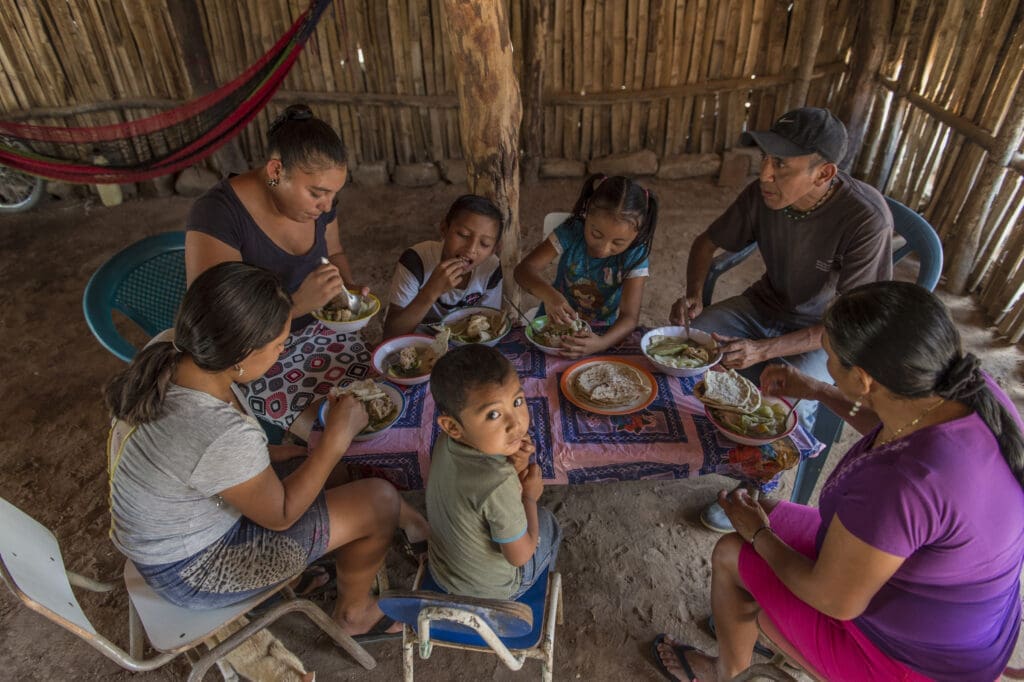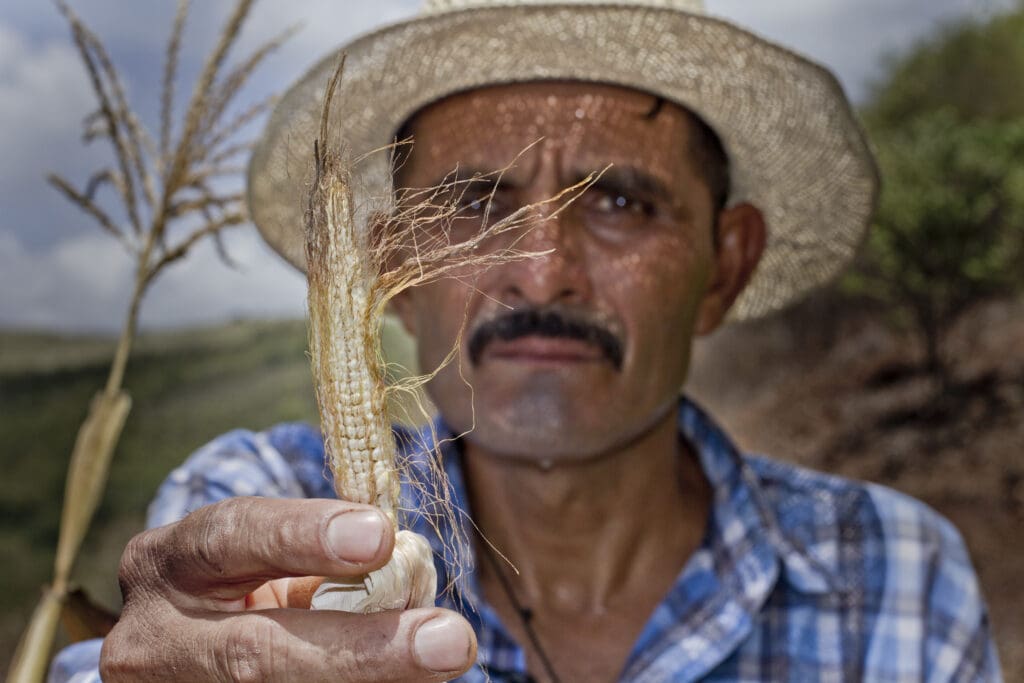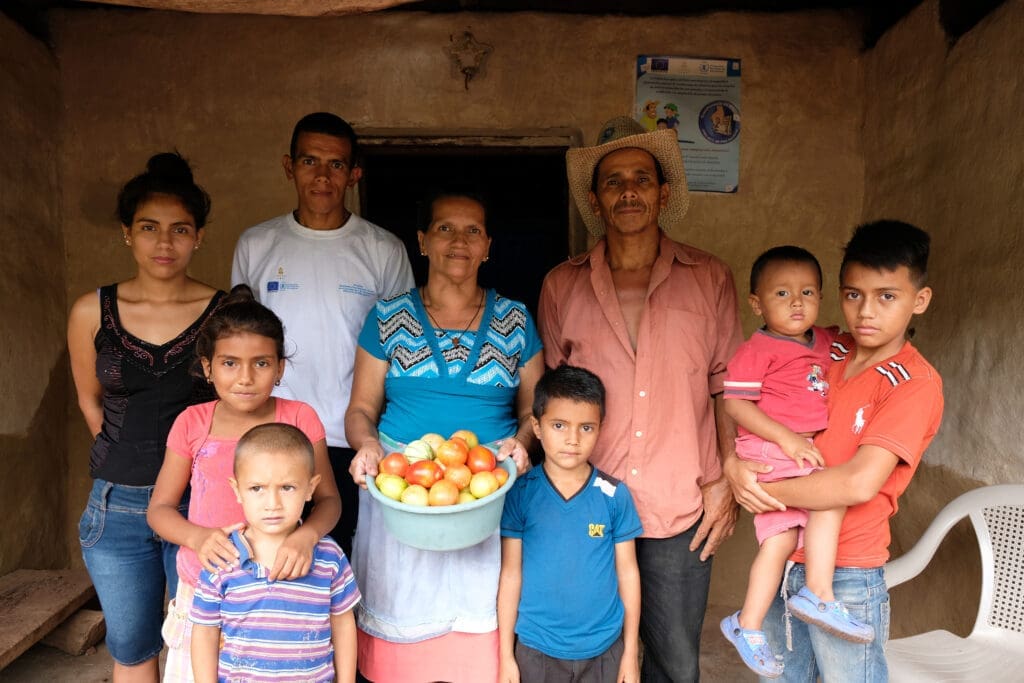
Voices of the Dry Corridor: Stories of Climate Change & Hunger
In the Dry Corridor of Central America – comprised of El Salvador, Guatemala, Honduras and Nicaragua – you don’t have to go far to see the devastation caused by climate change and extreme weather. Nearly 8 million people are in urgent need of food assistance because of drought and COVID-19 shocks.
Dry spells have ruined corn and bean crops, pushing families to extremes to feed themselves. Across the region, families have sold their farming tools and/or livestock so they can afford food. Even worse, the lack of food is driving people from their homes: In January 2021, 15 percent of people surveyed by WFP said they were planning to migrate.
For families throughout the region, each day carries the weight of uncertainty, leading them to wonder where their next meal will come from.
The six stories below depict the challenges they face and how they’re coping with hunger and a changing climate.
Rina and Brandon Perez

Climate change is having a serious impact on families in El Salvador, especially those where women are the head of household. Deforestation, land degradation and rising sea levels are making it harder for moms like Rina Perez to grow the food they need. WFP is helping by providing food vouchers, so Rina can buy highly-nutritious, fortified cereal for her son Brandon that she wouldn’t be able to afford otherwise.
Cristina and Fabricio Gabriel

Fabricio Gabriel (front and center) and his family live in El Salvador too, where the soil quality is poor. His mom, Cristina, takes part in WFP’s Resilience and Climate Change Program, which teaches soil conservation and provides participants with irrigation systems, allowing them to grow crops all year round. Families can now grow a much wider range of foods, like tomatoes, sweet peppers, eggplant, green beans and squash. The program helps Cristina feed her family of seven and earn a stable income from growing and selling her own vegetables.
Hugo Jolón

Hugo Jolón, a corn farmer in Guatemala, holds up an ear of underdeveloped, inedible corn. He lost his entire crop to the ongoing drought that is devastating the Dry Corridor. To help farmers like Hugo cope with the extreme climate, WFP’s Food for Assets program provides people with food in exchange for their work on community assets like dams, reservoirs and irrigation systems. That way, if the rain does come, it can be stored and routed to farms like Hugo’s.
Milfred Molina

Milfred Molina is president of the Development Community Committee in a town called Dry Sinaneca. It’s one of the driest places in Guatemala, where 36 percent of the rural population is food insecure and many are faced with water shortages as a result of the drought. Here, Milfred stands over a WFP-sponsored drip irrigation pilot project that will be introduced to the community only if the nearby dam fills with enough rain water. His goal is to teach families how to plant orchards that can survive dry spells and improve their diets. Right now, the people of Dry Sinaneca, like so many others throughout the Dry Corridor, are watching water evaporate before their eyes every day.
Jorge Alvarado

Jorge Alvarado holds up one of hundreds of fish that have died in the lagoon of Chuxolop in Guatamela. Severe drought is causing the lagoon to dry up, and the receding water doesn’t have enough oxygen to keep the fish alive. It’s a familiar story for families across Guatemala, which is one of the top 10 countries categorized as most susceptible to climate change. Today, nearly 9,000 families like Jorge’s in remote, disaster-prone areas receive either food or cash in exchange for their work on projects that will help them withstand extreme weather.
The Gómez Family

Dry conditions have led to crop failure and loss of livestock for subsistence farmers in Honduras as well. Here, women make up only 12 percent of small-scale farmers and are especially vulnerable to the impacts of climate change. That’s why WFP focuses specifically on empowering women to improve their livelihoods and support the nutrition of their children and families. The Gomez family, for example, received help from WFP to raise egg-laying hens. They sell the eggs in local markets, allowing them to earn an income and maintain a stable source of food.
You Can Make a Difference
The effects of extreme weather are often the most severe for poor and vulnerable communities. When disaster strikes, WFP works to meet the immediate needs of children like Brandon and Fabricio throughout South America and Latin America. WFP is providing families with the tools they need to be resilient when faced with the long-term devestation of climate change.
Right now, more than 80% of the world’s hungry people live in disaster-prone countries. They are struggling harder and harder to withstand more frequent and extreme weather events. To learn more, visit our Climate Change & Hunger hub.




